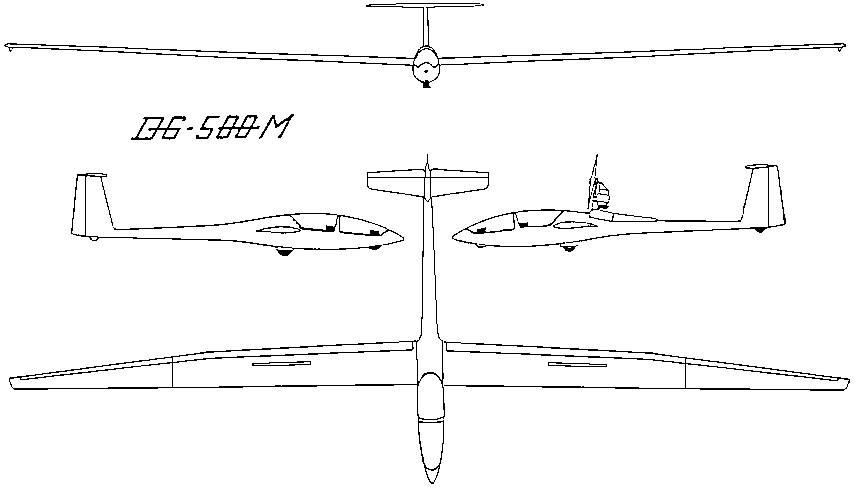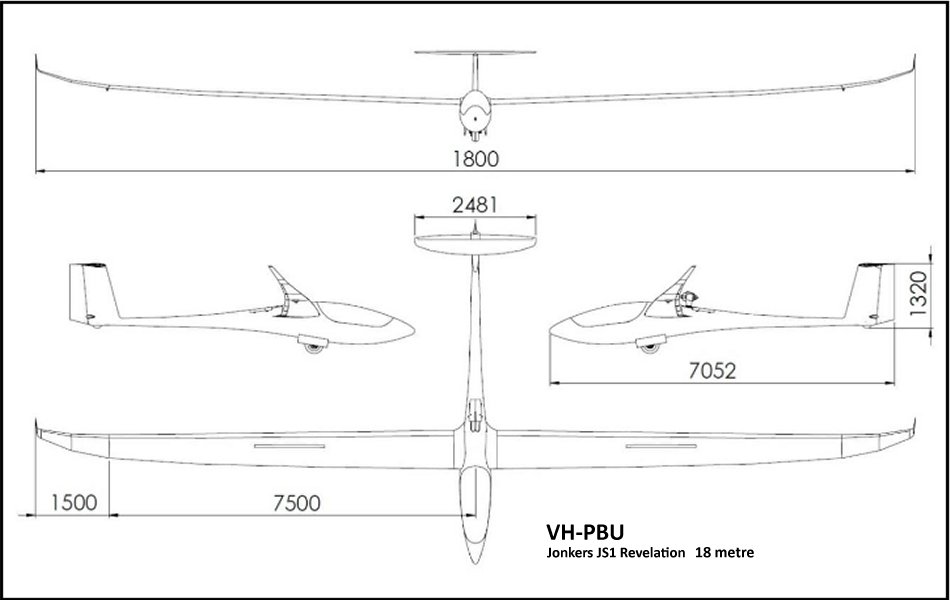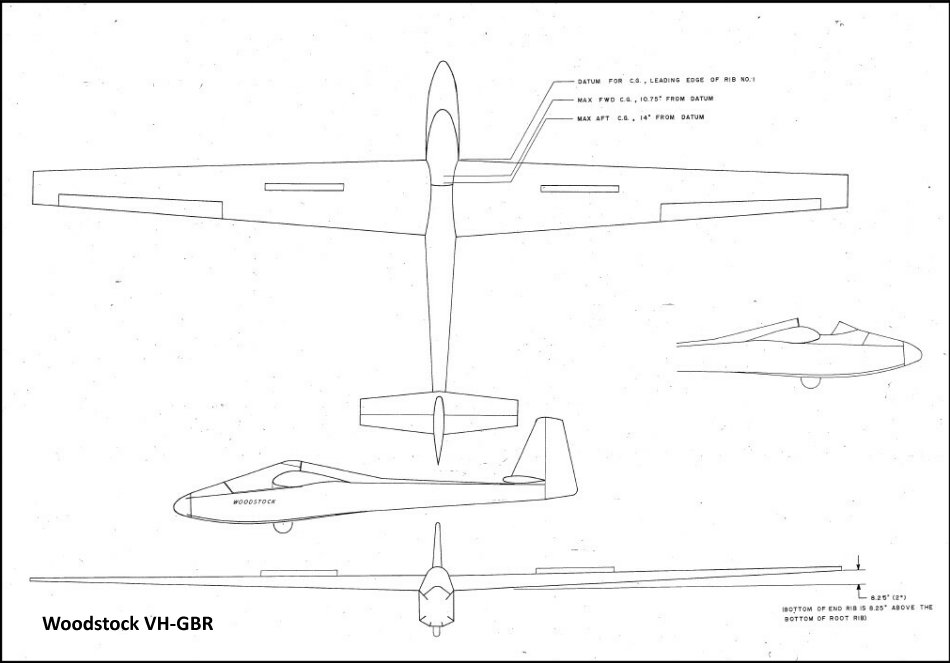|
Top

|
DG Flugzeugbau DG-500M/22
VH-XON S/N 5E64M27
Specifications
- Span:- 22m / 72.2ft
- Area:- 18.29m2 / 196.8ft2
- Aspect ratio:- 19.52
- Airfoil:- Wortmann FX-73-K-170/20 root; -170/22 tip
- Empty weight:- 445kg / 981lb
- Payload:- 305kg / 672lb
- Water Ballast:- 160kg / 353lb
- Gross weight:- 750kg / 1,653lb
- Wing loading:- 41.0kg/m2 / 8.40lb/ft2
- Engine:- Rotax 535C retractable
- Structure:- CFRP/GFRP
Performance
- L/D:- max 47 @ 111kph / 60kts
- Min sink:- 0.51m/s / 1.67fps / 0.99kts @ 80kph / 43kts / 50mph
- Vne:- 270kph / 146kts / 168mph
|
|

|
| The DG-500 comes in a number of sizes which all
share the same basic fuselage. The 500T Elan Trainer, which first flew in
1989 has an unflapped 18 m. wing without provision for Water Ballast;
retractable gear is an option. The front cockpit design has been purposely
made similar to that of the DG-300 Club. The higher performance versions (DG-50022 Elan and DG-500 M) have a 22 m flapped wing and are,
respectively, unpowered and self-launch models. VH-XON is the powered
model (DG-500M) and has a liquid cooled Rotax powerplant on an
electrically retracting pylon, digital engine instrumentation (DEI) and Water
Ballast reduced to 100 kg / 220 lb and comes with a steerable
nosewheel. The DEI, which has instrumentation in both cockpits, shows rpm,
temperatures, pressures and fuel quantity as well as controlling the
amount of fuel injected by the electronic fuel system. Engine retraction
is automatic once the propeller has been stopped and centred. All
22m ships, which have a four piece wing, have retractable gear as
standard. Performance of the 500M is similar to the 500/22 Elan, but empty
and Gross weights are 565 kg./ 1,246 lb And 825/1,819 lb
Respectively. |
|
Top

|
Jonker JS1 Revelation 18m
VH-PBU S/N
Specifications
- Span:- 18 m (59 ft 1 in)
- Length: 7.17 m (23 ft 6 in)
- Aspect ratio:- 28.8
- Airfoil:- JS-02-127 T12 with 6 variations along wing
- Empty weight:- 280 kg (617 lb)
- Payload:- 305kg / 672 lb
- Water Ballast:- 200 kg (441 lb)
- Gross weight:- 600 kg (1,323 lb)
- Sustainer Engine:- retractable MD-TJ42 turbojet engine mounted behind the cockpit
Performance
- Vne: 160 kt (290 km/h, 180 mph)
- Stall speed: 40 kt (75 km/h, 47 mph)
- Max rough air speed: 106 kt (198 km/h, 123 mph)
- Rate of sink: 0.50 m/s (97.5 ft/min)
- Lift-to-drag: 53
- Wing loading: 31.2 kg/m2 (6.4 lb/sq ft) - 53.6 kg/m2 (10.9 lb/sqft)
|
|

|
| Bla Bla
|
|
Top

|
Woodstock 15m
VH-GBR
Specifications-standard.
- Span:- 13 m (42 ft 8 in)
- Length: 5.879 m (19 ft 3.5 in)
- Aspect ratio:- 14.5:1
- Airfoil:- Culver 18%-13% custom
- Empty weight:- approx 107 kg (235 lb)
- Payload:- 120 kg / 672lb
- Water Ballast:- none
- Gross weight:- 229 kg (505 lb)
Performance
- Vne: 86 kt (160 km/h)
- Stall speed: 40 kt (75 km/h)
- Max rough air speed: 67 kt (124 km/h)
- Sink rate: 24:1
- Wing loading: 21 kg/m2 (4.2 lb/sq ft)
|
|

|
| This is a modified Woodstock
Modifications: Self Launching sailplane Konig 3 cylinder two stroke engine on a pole. Not retractable. Folding propeller. Electric start.
Wing span is increased to 13m (standard is 12m).
Wing spar strengthened.
Winglets.
Modified canopy.
Performance is modest. est 15:1
|
|
Top

|
![]()
![]()